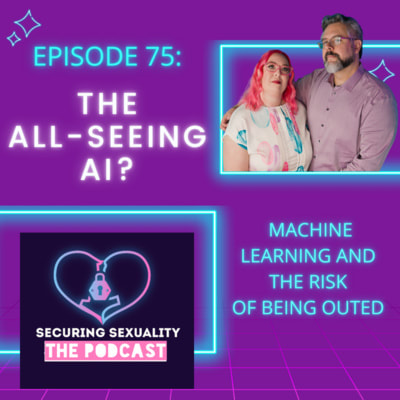Securing Sexuality is the podcast and conference promoting sex positive, science based, and secure interpersonal relationships. We give people tips for safer sex in a digital age. We help sextech innovators and toy designers produce safer products. And we educate mental health and medical professionals on these topics so they can better advise their clients. Securing Sexuality provides sex therapists with continuing education (CEs) for AASECT, SSTAR, and SASH around cyber sexuality and social media, and more.
Links from this week's episode:
Artificial Intelligence and Personal Privacy: Analyzing the Risks of AI in Inferring Intimate Information
In today's digital age, the rapid advancements in technology have given rise to various concerns regarding privacy. The intersection of privacy and artificial intelligence (AI) has become a pressing issue, as AI systems increasingly rely on personal information to deliver tailored experiences. This article explores the challenges and potential solutions for protecting personal information in the age of AI, highlighting the importance of striking a balance between the benefits of AI and safeguarding individual privacy.
1. The Role of Artificial Intelligence in Today's Society: Artificial intelligence has revolutionized various sectors, including healthcare, finance, and entertainment. AI systems can analyze vast amounts of data, identify patterns, and make predictions, enabling companies to deliver personalized experiences and improve efficiency. However, the increasing reliance on personal information raises concerns about the potential misuse or unauthorized access to sensitive data. 2. The Importance of Privacy in the Digital Age: Privacy is a fundamental human right that must be protected, especially in the digital age where personal information is vulnerable to data breaches and unauthorized access. Individuals should have control over their personal data and be informed about how it is collected, used, and shared. Privacy laws and regulations play a crucial role in ensuring individuals' rights are protected and holding organizations accountable for their data practices. 3. The Challenges of Protecting Personal Information in the age of AI:
4. Solutions for Protecting Personal Information in the age of AI:
As artificial intelligence becomes increasingly intertwined with our daily lives, protecting personal information is of paramount importance. Striking the right balance between the benefits of AI and privacy is crucial to ensure individuals' rights are respected. By implementing privacy-by-design principles, robust data governance frameworks, and enhancing transparency and accountability, organizations can navigate the intersection of privacy and AI successfully, creating a digital ecosystem that respects and protects personal information in the digital age. Key Concepts:
Comments are closed.
|











 RSS Feed
RSS Feed